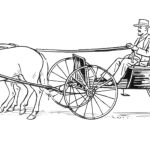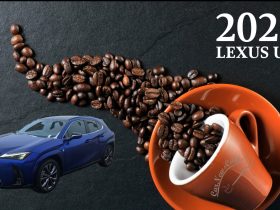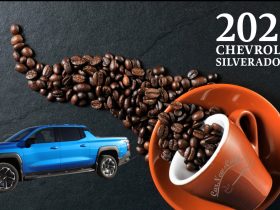Back in the day, farm boys and people with little sense of safety would fly around at 20 miles per hour on what were basically snow sleds with wheels.
Buckboard cars were the go-carts of the turn of the century. They had a short-lived, but exciting popularity from the early 1900s to the Great Depression.
 The term “buckboard” has a distinctly American theme. They were invented by a preacher in the 1800s as a simple, utilitarian horse-drawn vehicle. The name “buckboard” comes from the way the floor (there was no body) would flex to absorb some of the impact of ruts and washboards. These early pickup trucks, as it were, eventually gave way to cars made in a similar fashion once the automobile began to appear in the U.S.
The term “buckboard” has a distinctly American theme. They were invented by a preacher in the 1800s as a simple, utilitarian horse-drawn vehicle. The name “buckboard” comes from the way the floor (there was no body) would flex to absorb some of the impact of ruts and washboards. These early pickup trucks, as it were, eventually gave way to cars made in a similar fashion once the automobile began to appear in the U.S.
By the 1910s, though, the buckboard wagon and cars based on them were pretty much gone in favor of what were called Cyclecars. These were tiny, simplistic automobiles meant to be cheap and easy to operate. Then Briggs & Stratton got the idea of strapping one of its engines to a tiny platform with five wheels. The fifth wheel was the propulsion wheel and it raised and lowered to contact the ground to move the sled.
 Once these appeared in J.C. Whitney and Sears Roebuck catalogs (the Amazon of the day), farmboys across the nation started begging their parents for one. It didn’t take long for these four-wheeled death traps to start selling like cheap booze at spring break.
Once these appeared in J.C. Whitney and Sears Roebuck catalogs (the Amazon of the day), farmboys across the nation started begging their parents for one. It didn’t take long for these four-wheeled death traps to start selling like cheap booze at spring break.
Examples include the Briggs & Stratton Flyer, shown here in a display at the National Auto Museum in Reno, Nevada. B & G eventually sold the rights for the Flyer to Automotive Electric Service, which marketed it as the Auto-Red-Bug. A E S added an electric model that used a 12-volt battery and a starter motor from Dodge.
These crazy little buckboards had a top speed of around 20 miles per hour and sold for about $200 or so. The Great Depression basically ended the short reign of the buckboard car, but some revisited the idea in the 1960s as beach mobiles and go-carts.
Would you ride one of these? I know I would!
Photos taken at the National Automotive Museum in Reno, Nevada.




















Leave a Reply